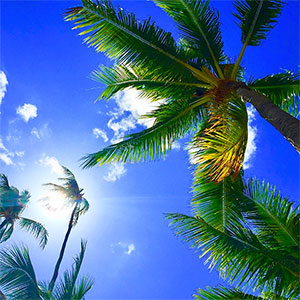Home & Leisure
/ArcaMax

Four Fabulous Children's Museums
Where can you, your kids and your grandkids climb, build, bat balls and race cars, all the while keeping out of the summer heat? At a children's museum, of course. These indoor playlands combine education with fun, focusing on STEM or STEAM-fueled exhibits (Science, Technology, Engineering, Arts and Math). When visiting cities this summer with ...Read more

When You Travel, Follow Your Passion
Amanda Syrowatka, a travel expert and director of the Viceroy Bali resort in Indonesia, suggests to people who are planning a vacation that they "focus on experiences that fuel your passion," then select a destination where they are available. Richard Burgon, who provides advice and assistance about recreational vehicles on his rovinrv.com ...Read more

Find Excitement and Leisure Alike in Atlantic City
About 30,000 years ago, groups of people crossed over from present-day Siberia to Alaska before moving on and settling along the Atlantic seaboard of today's United States. Their descendants became the Lenape tribe, part of the Algonquin nation whose members lived in what now is New Jersey.
These people were followed by Jeremiah Leeds, a ...Read more

Art, Music and Fun on New York City's High Line
I recently was enjoying a leisurely stroll along a path that leads through a treasure-trove of various architectural styles, museum-quality displays of art and floral plantings that would make any gardener proud. I was walking the High Line, the elevated former railway that runs 30 feet above street level down the west side of Manhattan, New ...Read more

Follow the Historic Trail of the Pony Express
Around 1857, a man named Gerat Hollenberg and his wife, Sophia, built a modest wood-shingled house in present-day Kansas, four years before the territory became a state. The structure also served as a grocery store, tavern and unofficial post office for immigrants following the Oregon-California Trails. Three years later it became one of the ...Read more

Street Art Delights People on the Go
People walking along a thoroughfare in Silver Spring, Maryland, just outside of Washington, D.C., pass beneath a line of abstract paintings attached to the side of a building. Each includes a quote attributed to a famous historic figure.
"Be tolerant with others and strict with yourself," instructs Marcus Aurelius, the stoic philosopher and ...Read more

Look for Yard Sales During Your Next Trip
"Oh, look," my wife, Fyllis, exclaimed with surprise and delight. "I've been looking for antique candlesticks like these for ages."
"And I've been searching for an old-fashioned briefcase like this one," I replied, lifting my find from a pile of items spread out on a long table.
We were far from home, enjoying a vacation in upstate New York, ...Read more

Beyond Tasting Wine in Napa and Sonoma
What can visitors do in Napa and Sonoma besides drink wine? The question looms large for the legendary San Francisco Bay Area wine regions as well as for other wine areas around the country as they face recent mounting challenges.
Gen Z, people ages between 21 and 28, consume less wine than previous generations partially because wine -- and ...Read more

Spectacular Scenery Plus Native American History in the Southwest
Native American land in the Southwest blooms with spectacular scenery and rewards visitors with an understanding of Native American history and culture. Monument Valley Navajo Tribal Park, Canyon de Chelly and Taos Pueblo not only put you in the midst of formidable landscapes but also provide the opportunity for a first-hand encounter with ...Read more

Unknown Washington Highlights Are Off the Beaten Path
More than 25 million Americans visit Washington, D.C., each year. Most come to enjoy the magnificent monuments, take a guided tour of the White House and see other buildings where history has been -- and is being -- made.
Fewer venture beyond the major tourist attractions to find often-overlooked sites and neighborhoods filled with hidden gems ...Read more

Renaissance Festivals Return Merrymakers to the Past
I recently joined about 3,000 other spectators watching armor-clad horseback-riders engage in combat jousting. King Henry VIII and Queen Jane Seymour, the third of his six wives, strolled out onto a balcony overlooking the arena and waved to the crowd. Then I accompanied those seated in my section of the stands in shouting encouragement to the ...Read more

For Both Body and Spirit: Take a Hike
During a recent visit to Florida, I strolled along a section of a trail that provided close-up views of magnificent scenery, rolling beach sand dunes and a virtual aviary of colorful birds. I was walking on part of the Florida National Scenic Trail, a 1,500-mile-long footpath that weaves its way across the state from the Big Cypress National ...Read more

Extraordinary Adventures on American Cruise Lines' Harmony
So, yes, I'd heard about Lewis and Clark (that would be Meriwether Lewis and William Clark). And I vaguely knew that Thomas Jefferson had dispatched them to explore the Louisiana Purchase that he had just acquired from France in 1803. But not until my husband and I took an American Cruise Lines expedition of our own to the Snake and Columbia ...Read more

Touring Wonderful Windsor, England
"Why don't you just move there?"
Some friends, knowing what an Anglophile I am (having toured the United Kingdom often, including London 42 times), recently teased me when I commented that of the 55 countries I have visited I would love to spend three months in delightful Windsor, England. It's just a 20-minute taxi ride from Heathrow and about...Read more

'Nature Bathing' Is Good for Your Health
Don and Betty Price work hard all week. Don is an accountant, Betty an executive assistant. On weekends they're in the mood for some welcome rest, relaxation and rejuvenation. Their preferred solution: Take to the woods.
They often pile into their car and head for a park outside of the city where they live. On occasion they find the solace they...Read more

Temecula Valley Wows With Wine and Wisteria
There's a certain serenity to sipping a glass of fine sangiovese wine while watching the sunset when you're sitting beneath cascading wisteria vines in full bloom that pour from the entire 70-foot frontage of a wine-tasting patio pergola. The setting is the Palumbo Family Vineyards and Winery in Southern California's Temecula Wine Valley in ...Read more

Gullah Culture Thrives in South Carolina
Gullah-Geechee heritage is unique to South Carolina, and a visit here is a fascinating way to learn about the people who grew world-famous Sea Island cotton on plantations in the lower part of the state. From here they shipped it to Europe from the 1700s until the Civil War. Now the historic area of the plantation cotton farms has been ...Read more

A Tale of Two East Coast Boardwalks
Pedaling along the boardwalk to the rhythmic whoosh of the breaking waves, first on a tricycle and then on a bike, is among my favorite childhood memories. And boardwalks still make me happy. They add fun to the classic American idyll of sun, sand and sea. Two of my favorite East Coast boardwalks unfurl in Virginia Beach, Virginia, and Miami ...Read more

Exploring Venice: Lost and Finds
Walking home to our apartment in Venice, we shared a wave through the window with the owner of Baba, our local osteria. When we left for a day of sightseeing, a cup of my favorite pistachio gelato awaited me, despite the early hour. Later, at the Bar Dugole, we relaxed after a day of sightseeing and ordered the regular: vodka for my husband and ...Read more

Watch the Frogs Jump in Calaveras County
Visitors to the high California hills of Calaveras County during the third weekend in May have quite a treat in store. This is when Frogtown, USA, comes to life with the annual Calaveras County Fair and Frog Jump Jubilee.
Mark Twain put Calaveras County on the literary map with his 1867 essay, "The Celebrated Jumping Frog of Calaveras County." ...Read more




























